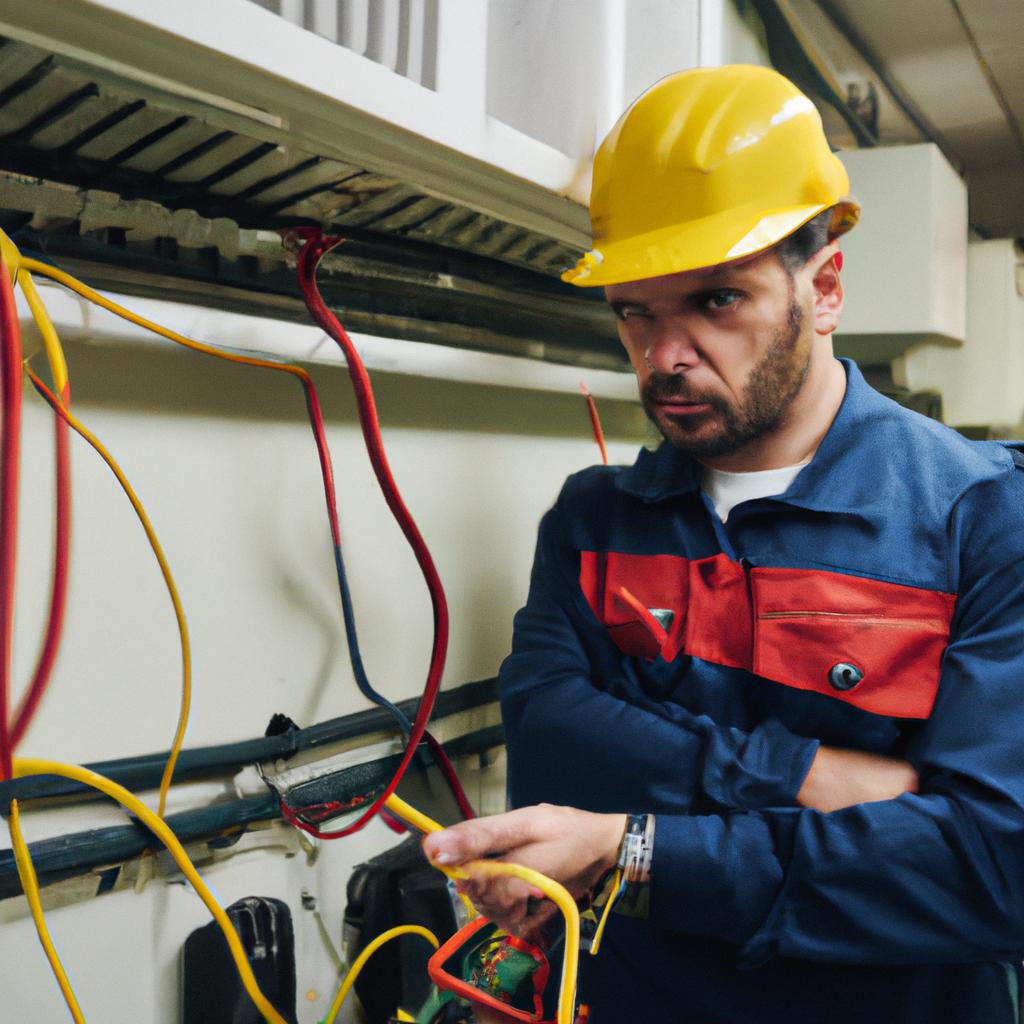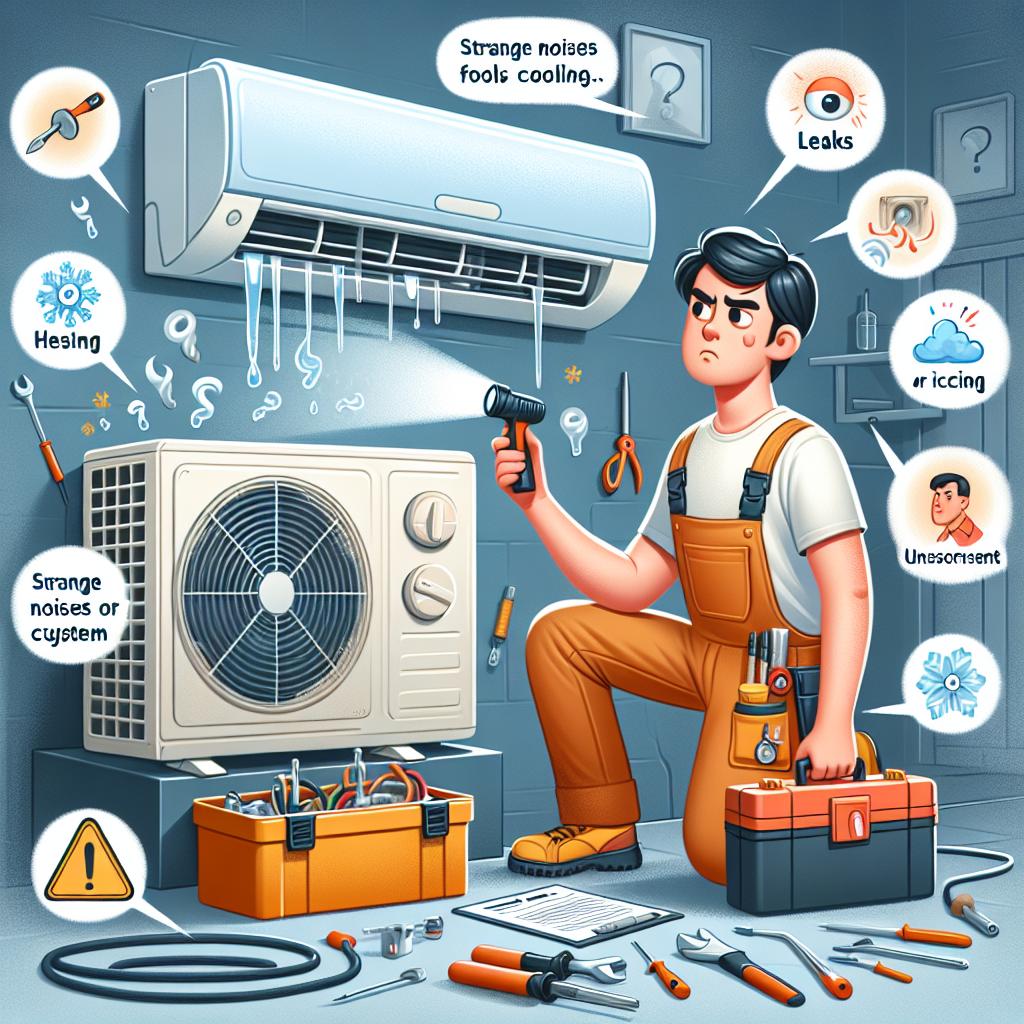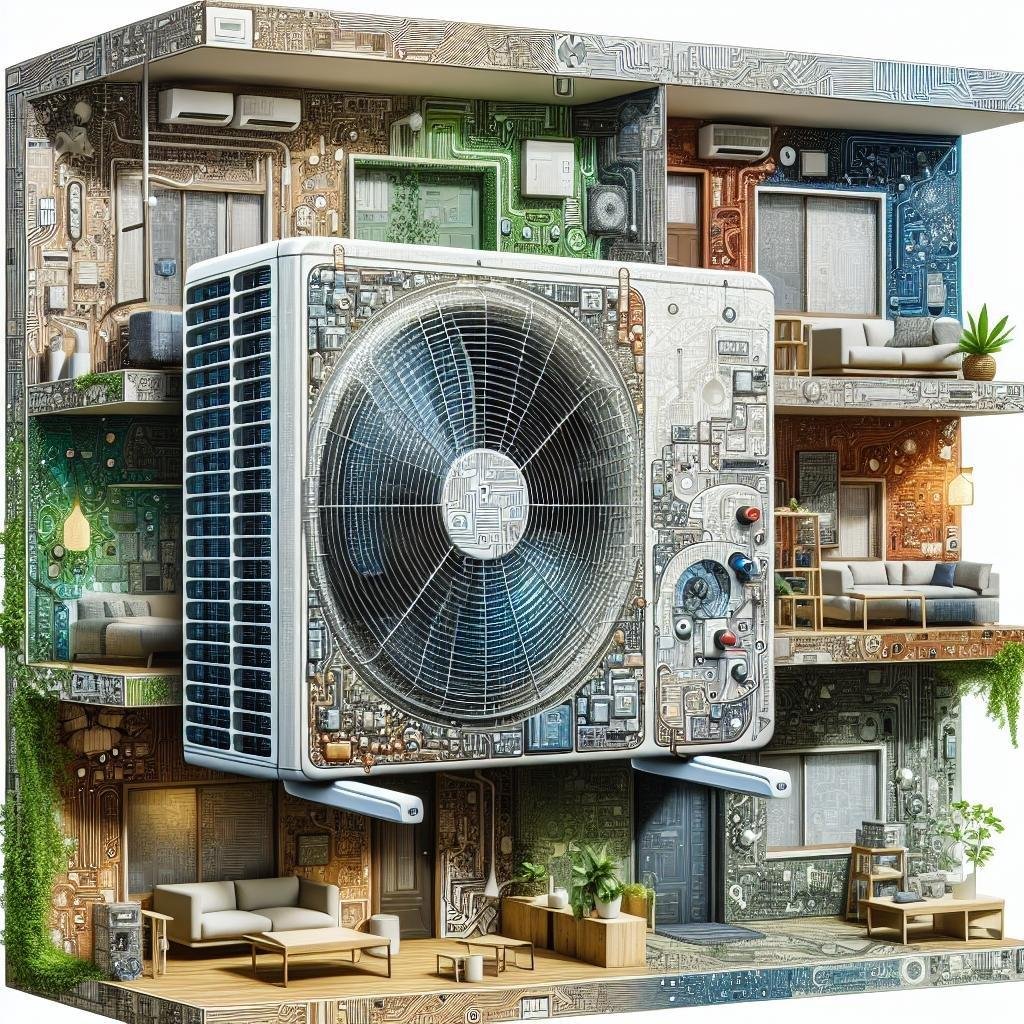In the bustling world of commercial environments, where temperature control holds the key to productivity and comfort, mini split air conditioning systems have emerged as a favored solution. Sleek and efficient, these systems promise to deliver customizable climate comfort without the complexities of traditional HVAC setups. However, the magic of mini splits doesn’t come without its share of responsibilities. To ensure they function optimally, regular maintenance is paramount. This article delves into the essential maintenance requirements of mini split AC systems, guiding facility managers and business owners alike through the crucial steps to keep these systems running smoothly. By understanding the intricacies of upkeep, stakeholders can not only extend the lifespan of their equipment but also enhance indoor air quality and energy efficiency in their commercial spaces. Join us as we explore the vital aspects of maintaining these modern cooling marvels, equipping you with the knowledge to keep your environment comfortable all year round.
Essential Components of Mini Split AC Systems and Their Roles
Mini split AC systems consist of several essential components, each playing a vital role in ensuring efficient cooling and heating in commercial environments. The indoor unit, typically mounted on walls or ceilings, is responsible for distributing conditioned air throughout the space. It houses the evaporator coil and the fan, which work in tandem to absorb heat from the air inside and push cooled air back into the room. The outdoor unit, located outside the building, contains the compressor and condenser coil. The compressor circulates refrigerant through the system, while the condenser coil dissipates heat absorbed from the indoor environment. This separation of components allows for flexibility in installation and enhances energy efficiency.
Additionally, the refrigerant lines connecting the indoor and outdoor units are crucial for the system’s operation, allowing for the transfer of heat. These insulated lines help to maintain temperature and efficiency throughout the exchange process. The remote control or wall-mounted thermostat facilitates user control over temperature settings and operational modes, ensuring comfort while optimizing energy consumption. Lastly, the drain line enables moisture removal, preventing water buildup and minimizing the risk of mold growth. Regular maintenance of these components ensures that the mini split AC system operates at peak performance, effectively meeting the demands of commercial applications.

Common Maintenance Challenges Faced in Commercial Settings
Maintaining mini split AC systems in commercial environments presents several unique challenges that can hinder operational efficiency. Accessibility is often a primary concern; these systems may be installed in hard-to-reach locations, making regular maintenance tasks like filter changes or coil cleaning burdensome. Additionally, staffing issues can complicate matters. Many businesses lack dedicated maintenance personnel, leading to reliance on external contractors who might not prioritize or understand the specific needs of mini split units. Delays in scheduling can cause systems to run inefficiently, increasing energy costs and potentially leading to premature equipment failure.
Another significant challenge is the environmental impact of commercial settings that often introduce more demanding conditions for HVAC systems. High levels of dust and pollutants can easily clog filters, making regular servicing essential. Moreover, varying usage patterns can strain equipment; some areas may require constant cooling while others might not, leading to issues with system balancing and temperature control. This variability necessitates a tailored maintenance strategy that considers the specific layout and operational hours of the space, further complicating an already intricate maintenance protocol.

Best Practices for Routine Inspections and Cleanings
Implementing effective routine inspection and cleaning protocols for mini split AC systems is crucial for optimal performance in commercial environments. Begin by developing a structured schedule that aligns with both usage patterns and manufacturer recommendations. Frequent checks should cover essential components, including filters, coils, drain lines, and condensate pumps. This guarantees that any potential issues are addressed before they escalate, reducing downtime and repair costs. Consider utilizing a checklist to streamline this process; it can serve as a practical tool to ensure that no aspect is overlooked during inspections.
Additionally, foster an environment of accountability by assigning specific team members to handle maintenance tasks. This promotes ownership and encourages prompt action when issues arise. Incorporate the following best practices into your routine:
- Regular Filter Replacement: Every 1-3 months, depending on usage.
- Coil Cleaning: Clean the evaporator and condenser coils at least once per year.
- Drain Line Inspection: Check for clogs and ensure proper drainage bi-annually.
- Thermostat Calibration: Verify settings and functionality every six months.

Signs Your Mini Split AC System Needs Professional Attention
Monitoring the performance of your mini split AC system is essential to ensuring optimal functionality and energy efficiency. There are several key indicators that may suggest it’s time to call in a professional. Look out for strange noises such as grinding, squealing, or rattling that weren’t previously present, as these sounds could indicate mechanical issues. Additionally, if you notice inconsistent cooling across different zones, this may signal a problem with the system’s distribution or refrigerant levels. Other signs include increased energy bills that seem disproportionate to your usage, as this can point to underlying inefficiencies in your system.
Frequent filter clogging or buildup of dirt within the unit can greatly impact performance, and if you’re constantly needing to clean or replace filters, it might indicate an infection of mold or mildew that requires professional remediation. Furthermore, if the outdoor unit is leaking water or refrigerant, this is a clear red flag that shouldn’t be ignored. Here’s a quick reference table for identifying issues that might require professional attention:
| Issue | Possible Cause |
|---|---|
| Strange Noises | Mechanical malfunction or loose components |
| Inconsistent Cooling | Refrigerant leak or airflow obstruction |
| High Energy Bills | System inefficiencies or excessive load |
| Frequent Filter Clogging | Dirty environment or mold presence |
| Water or Refrigerant Leakage | Piping issues or overly low refrigerant levels |
Q&A
Q&A: Understanding the Maintenance Requirements of Mini Split AC Systems in Commercial Environments
Q1: What is a mini split AC system, and how does it differ from traditional HVAC systems?
A1: A mini split AC system is a type of air conditioning that consists of an outdoor unit and one or more indoor units connected by refrigerant lines. Unlike traditional HVAC systems, which often rely on ductwork to distribute air, mini splits offer the advantage of zoned cooling, allowing for individualized temperature control in different areas of a commercial space. This flexibility can lead to energy savings and increased comfort for occupants.
Q2: Why is regular maintenance critical for mini split AC systems in commercial environments?
A2: Regular maintenance is essential for mini split AC systems to ensure optimal performance, energy efficiency, and longevity. In commercial settings, where equipment runs longer and is subjected to varying loads, neglecting maintenance can lead to reduced airflow, increased energy consumption, and premature wear and tear. Additionally, routine upkeep helps to identify potential problems before they escalate, minimizing unexpected downtime and costly repairs.
Q3: What are the key maintenance tasks required for mini split AC systems?
A3: Key maintenance tasks for mini split AC systems include:
- Cleaning or replacing air filters: Clogged filters restrict airflow and reduce efficiency, making it important to check and clean them regularly.
- Cleaning condenser and evaporator coils: Dirt and debris can accumulate on coils, affecting heat exchange. Cleaning them helps maintain efficiency.
- Checking and clearing drainage lines: Blocked drainage can lead to water damage and mold growth, so ensuring lines are clear is vital.
- Inspecting insulation on refrigerant lines: Worn or damaged insulation can affect efficiency.
- Checking refrigerant levels: Low refrigerant levels can indicate leaks, which should be addressed immediately to prevent system damage.
Q4: How often should a commercial facility schedule maintenance for its mini split systems?
A4: It’s generally recommended to schedule maintenance for mini split AC systems at least twice a year. This includes one inspection before the cooling season begins and another before heating, especially if the system has a heat pump functionality. However, facilities with higher usage or specific environmental challenges may benefit from more frequent evaluations.
Q5: What signs indicate that a mini split AC system needs maintenance?
A5: Signs that a mini split AC system may require maintenance include:
- Unusual noises or vibrations from the units
- Fluctuations in temperature or humidity levels within the space
- Increased energy bills
- Water pooling around the indoor or outdoor units
- Foul odors emitting from the system
Addressing these issues promptly can enhance system performance and prevent more significant problems.
Q6: Can staff perform basic maintenance, or is professional service always necessary?
A6: While some basic maintenance tasks, such as cleaning or replacing filters, can be performed by staff, it’s wise to enlist professional service for more complex tasks, such as coil cleaning, refrigerant checks, and electrical inspections. Professionals have the expertise and tools necessary to thoroughly assess the system and identify any underlying issues that may not be apparent to the untrained eye.
Q7: What are the cost implications of neglecting mini split AC maintenance in a commercial setting?
A7: Neglecting maintenance can lead to a range of cost implications, including:
- Higher energy bills: A neglected system operates less efficiently, leading to increased energy costs.
- Frequent repairs: Prolonged issues can cause a minor problem to escalate into major repairs.
- Shortened lifespan: Poorly maintained systems may fail prematurely, leading to costly replacements.
- Comfort issues: An inefficient unit can create uncomfortable working conditions, potentially affecting productivity.
Investing in regular maintenance can mitigate these costs significantly.
Q8: How can commercial property managers effectively implement a maintenance schedule for mini splits?
A8: To effectively implement a maintenance schedule, commercial property managers can:
- Stay organized: Create a calendar with maintenance dates, tasks, and responsible staff or contractors.
- Educate staff: Train staff in basic maintenance tasks and the importance of regular upkeep.
- Utilize technology: Consider maintenance management software to track maintenance activities and schedules.
- Engage professionals: Build relationships with HVAC service providers to ensure timely and thorough inspections.
By taking a proactive approach, property managers can enhance the reliability and efficiency of their mini split AC systems.
This Q&A format helps clarify the essential aspects of maintaining mini split AC systems in commercial environments, ensuring that property managers and facility operators understand their responsibilities and the best practices for keeping their systems running smoothly.
Key Takeaways
As we conclude our exploration into the maintenance requirements of mini split AC systems in commercial environments, it becomes clear that a proactive approach is essential for ensuring the longevity and efficiency of these climate control systems. Just as businesses prioritize customer satisfaction and operational efficiency, so too must they invest in the regular upkeep of their HVAC systems.
By understanding the unique needs of mini splits — from routine filter changes to annual professional inspections — commercial operators can avoid costly breakdowns and ensure a comfortable atmosphere for both employees and clients alike. The nuanced balance of maintenance and innovation will not only sustain performance but also contribute to energy efficiency and sustainability goals.
In the ever-evolving landscape of commercial HVAC solutions, embracing mindful maintenance practices can elevate your space’s comfort while also supporting your bottom line. As you move forward, remember: a well-maintained mini split system is more than just a functional asset; it’s a vital component of a thriving business environment. Thank you for joining us on this journey toward clearer understanding and effective management of these indispensable systems.

